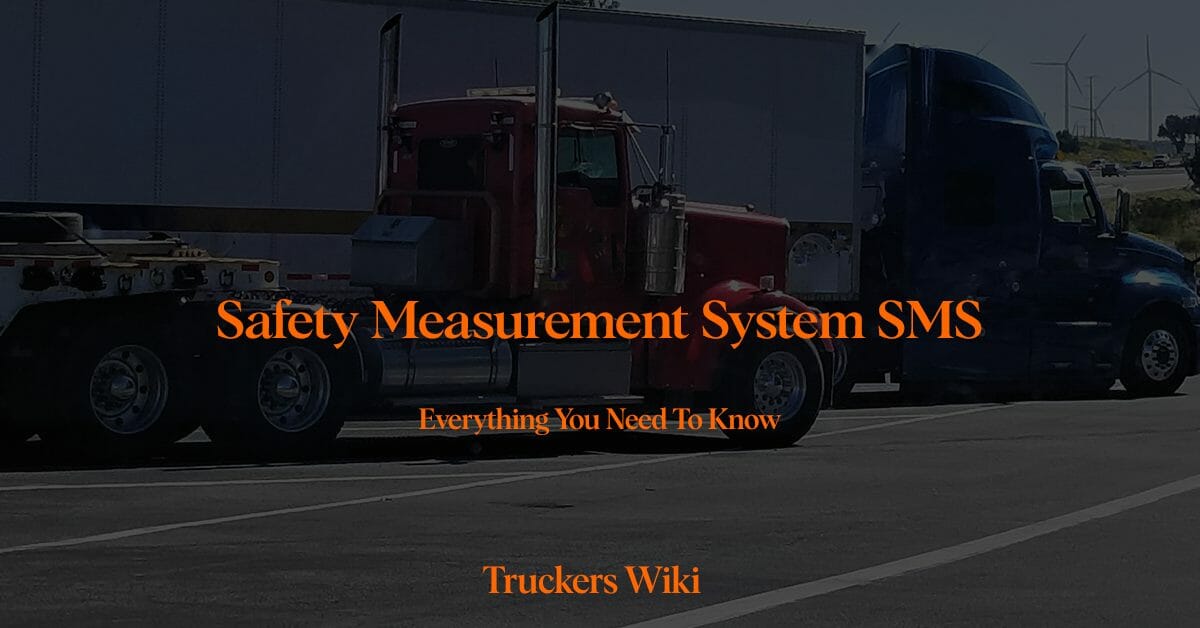
Table of Contents
What is the Safety Measurement System (SMS)
The Safety Measurement System is a program developed by the Federal Motor Carrier Safety Administration (FMCSA) as part of their larger Compliance, Safety, Accountability (CSA) initiative. It evaluates the safety performance of commercial motor carriers and drivers, utilizing a data-driven approach to identify and address potential safety concerns.
Key Components of SMS
Behavior Analysis and Safety Improvement Categories (BASICs)
The Behavior Analysis and Safety Improvement Categories (BASICs) are critical components of the Safety Measurement System (SMS) used by the Federal Motor Carrier Safety Administration (FMCSA) to assess and monitor the safety performance of commercial motor carriers and drivers. These seven categories represent key aspects of carrier and driver safety behavior. Here is an in-depth look at each of the BASICs:
Unsafe Driving
This category focuses on behaviors related to the operation of a commercial vehicle. It includes violations such as speeding, aggressive driving, improper lane changes, and other unsafe driving practices. Any violation that endangers the safety of the driver, passengers, or other road users falls under this BASIC.
Hours-of-Service (HOS) Compliance
HOS Compliance assesses a carrier’s compliance with regulations governing the maximum amount of time a driver is allowed to operate a commercial vehicle without taking a break for rest. Violations may include exceeding maximum driving hours, failing to maintain accurate logbooks, and not taking required rest breaks. Ensuring drivers adhere to HOS regulations is crucial for preventing driver fatigue and enhancing road safety.
Learn more about Hours of Service here.
Driver Fitness
Driver Fitness focuses on the qualifications and physical condition of commercial drivers. Violations in this category may include operating a commercial vehicle without a valid commercial driver’s license (CDL), failing to have a valid medical certificate, or employing a driver with a disqualifying medical condition.
Controlled Substances and Alcohol
This category evaluates compliance with regulations regarding the use of controlled substances and alcohol. Violations may include operating a commercial vehicle under the influence of drugs or alcohol, failing to undergo required drug and alcohol testing, or employing a driver with a positive drug or alcohol test result.
Vehicle Maintenance
Vehicle Maintenance assesses the condition and upkeep of commercial vehicles. Violations in this category may include issues like faulty brakes, worn tires, malfunctioning lights, and other equipment-related problems. Regular and proper maintenance of vehicles is essential for preventing accidents due to mechanical failures.
Learn more about Vehicle Maintenance here.
Hazardous Materials (HM) Compliance
HM Compliance focuses on compliance with regulations related to the transportation of hazardous materials. Violations may include improper labeling or packaging of hazardous materials, failure to provide the necessary placards, or not following proper loading and unloading procedures for hazardous materials. Ensuring the safe transport of hazardous materials is crucial for protecting public safety and the environment.
Crash Indicator
The Crash Indicator category assesses a carrier’s crash history, taking into account factors such as the frequency and severity of crashes involving the carrier’s vehicles. A high number of crashes or crashes resulting in serious injuries or fatalities can negatively impact a carrier’s safety rating.
Data-Driven Evaluation
SMS relies on a wealth of data collected from various sources, including inspections, crashes, and compliance reviews. This data is then used to calculate safety scores for carriers and drivers.
Scoring and Percentile
Carriers and drivers receive scores in each BASIC, along with percentiles that compare their performance to others in the same category.
How Does SMS Work
Data Collection
Data is collected from a multitude of sources, including roadside inspections, crash reports, and compliance reviews.
Weighting of Violations
Violations are assigned severity weights, with more severe violations carrying greater weight in the assessment process.
Scoring and Percentiles
The system generates scores for each BASIC, representing the carrier’s or driver’s performance in that category. Percentiles indicate where they stand relative to others.
Interventions and Enforcement
Based on SMS scores, carriers and drivers may face interventions or enforcement actions, including warning letters, focused interventions, or compliance reviews.
Benefits of SMS
Proactive Safety Improvement
SMS allows carriers and drivers to identify areas for improvement before they lead to serious safety incidents.
Resource Allocation
It helps enforcement agencies allocate their resources efficiently, focusing on carriers and drivers with higher risk profiles.
Transparency and Accountability
SMS promotes transparency by making safety data available to the public. This encourages carriers and drivers to maintain high safety standards.
Challenges and Criticisms
Data Quality Concerns
Critics argue that the accuracy and consistency of data used in SMS can vary, potentially leading to skewed assessments.
Overemphasis on Certain Violations
Some believe that certain violations are weighted too heavily, potentially creating an imbalanced view of safety performance.
Using SMS for Improvement
Regular Monitoring and Analysis
Carriers and drivers should regularly review their SMS scores and percentiles to identify areas for improvement.
Training and Education
Addressing deficiencies through training and education can lead to sustained improvements in safety performance.

